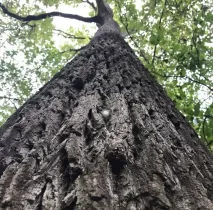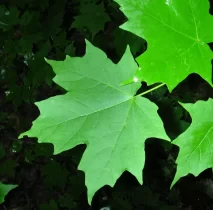Trees We Buy
Your Guide to the Best Trees to Sell for High-Quality Timber
At Walnut Timber Buyers, we often receive inquiries from our clients about the types of trees we purchase. However, answering this question is more nuanced than it may seem! Our acquisitions from landowners hinge on various factors such as quantity, quality, tree species, and more. To simplify the process and assist you in gauging the potential value of the trees on your property, we’ve created a guide to kickstart your timber sale journey.
Here’s a user-friendly visual guide to help our clients identify the primary marketable timber species on their property. Please note that while this guide offers a quick reference for basic identification, it’s not an exhaustive resource. Once you’ve identified the tree species, our team at Walnut Timber Buyers can determine their approximate market value with the expertise of our tree appraisal professionals.
All the information provided is sourced from the University of Illinois’ “Forest Trees of Illinois” by Mohlenbrock, R. H. (2006), courtesy of the Illinois Department of Natural Resources.
View Trees and Defining Characteristics of Species We Buy
Black Walnut
Distinguishing Features
Black walnut is recognized by its characteristic buds; light brown, chambered pith; and distinctive fruits. The terminal leaflet is lacking or very small.
Popular Uses
Illinois’s most valuable hardwood species; high-quality lumber, face veneer, furniture, flooring, gunstocks, cabinets, wall paneling, interior finishings, turned products, novelties, carvings, and firewood.
White Oak
Distinguishing Features
White oak is recognized by its grayish bark and 7 to 9 round lobed, smooth leaves, which are usually whitish on the lower surface. Its oblong greenish brown, shiny acorns also are distinctive.
Popular Uses
A prized timber species; high-quality lumber, face veneer, furniture, pulpwood, cabinets, flooring, paneling, interior finishing, railroad crossties, tight cooperage (whisky and wine barrels), general construction, novelties, boxes, crates, blocking, pallets, and firewood.
Northern Red Oak
Distinguishing Features
The acorn, with its very shallow, saucer-shaped cap, is the best identifying characteristic of northern red oak. The leaves are generally more shallowly lobed than those of black oak, southern red oak, and scarlet oak.
Popular Uses
A prized timer species; high-quality lumber, face veneer, furniture, pulpwood, cabinets, flooring, paneling, interior finishing, railroad crossties, slack cooperage, general construction, mine timbers, fence posts, novelties, boxes, crates, blocking, pallets, and firewood.
Burr Oak
Distinguishing Features
Bur oak leaves are distinctive because they are very broad in the upper half, with a pair of deep sinuses a little below the middle. The large, fringed acorn cups also are a prominent feature.
Popular Uses
A valuable timber species; high-quality lumber, face veneer, furniture, pulpwood, cabinets, flooring, paneling, interior finishing, railroad crossties, tight cooperage, general construction, mine timber, fence posts, novelties, boxes, crates, blocking, pallets, and firewood.
Ash
Distinguishing Features
Light or dark gray bark with diamond-shaped furrows between flat-topped, sometimes scaly ridges.
Popular Uses
A valuable timber species; lumber, veneer, furniture, pulpwood, cabinets, flooring, interior finishings, slack cooperage, baseball bats, handle stock, oars, railroad crossties pallets, blacking and firewood; widely planted as an ornamental tree.
Sugar or Hard Maple
Distinguishing Features
Sugar Maple differs from black maple by its leaves and twigs. Sugar maple leaves do not have stipules at the base of their petioles. Sugar maple twigs are usually shinier, with smooth winter buds.
Popular Uses
A valuable timber species; high-quality lumber, face veneer, furniture, baseball bats, cabinets, flooring, paneling, interior finishing, railroad crossties, woodenware, novelties, butcher’s blocks, boxes, crates, handles, sporting and athletic goods, musical instruments, maple syrup, blocking, pallets, and firewood.
Silver or Soft Maple
Distinguishing Features
The deeply lobed leaves, which are silvery white on the lower surface, vest distinguish this tree.
Popular Uses
Lumber, veneer, furniture, pulpwood, cabinets, railroad crossties, flooring, maple syrup, pallets, blocking, and firewood.
Bitternut Hickory
Distinguishing Features
Bitternut hickory is easily recognized by its slender, mustard yellow buds. It differs further from other hickories by its rounded fruits.
Popular Uses
A valuable timber species; tool handles, lumber, veneer, furniture, pulpwood, cabinets, flooring, interior finishings, pallets, blocking, smoking meats, and firewood.
Shagbark Hickory
Distinguishing Features
Shagbark hickory is distinguished by its shaggy bark, its usually five large leaflets, and its large winter buds.
Popular Uses
A valuable timber species; tool handles, lumber, veneer, furniture, pulpwood, cabinets, flooring, interior finishings, agricultural implements, baseball bats, gymnasium apparatus, patterns, blocking, smoking meats, and firewood.























